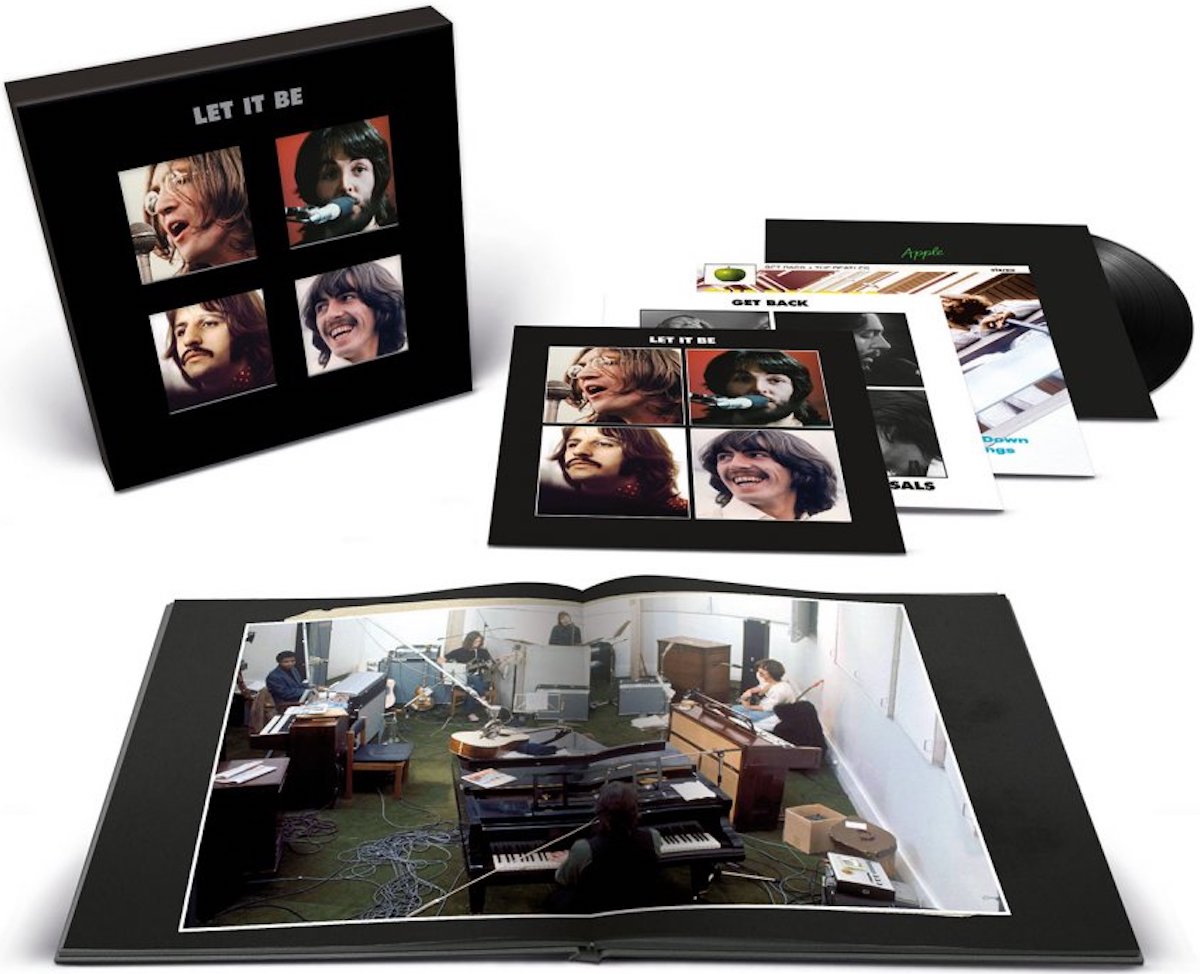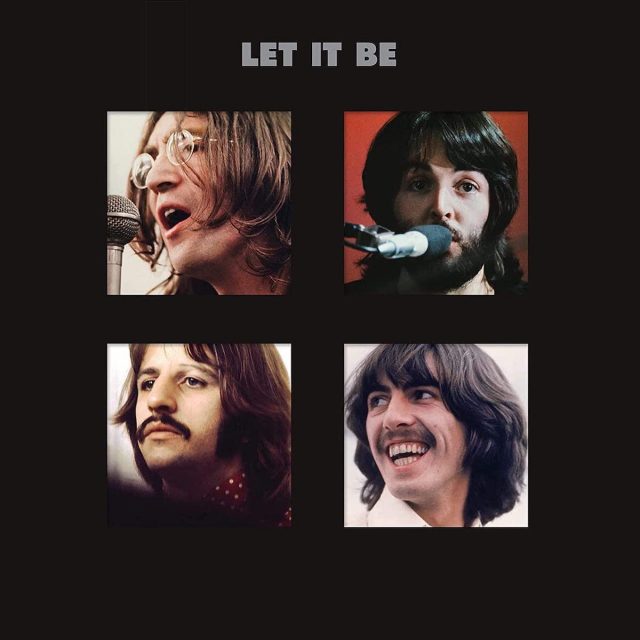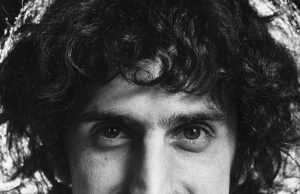THE EDITED PRESS RELEASE: “On Jan. 2, 1969, John Lennon, Paul McCartney, George Harrison and Ringo Starr kickstarted the new year together on a cavernous soundstage at Twickenham Film Studios in London. The Beatles jumped into rehearsals for a project envisioned to get them back to where they once belonged: Onstage. For 21 days, cameras and tape recorders documented almost every moment: first at Twickenham and then at The Beatles’ own Apple Studio, where Billy Preston joined them on keyboards. Together they rehearsed new originals and jammed on older songs, all captured live and unvarnished.
On Jan. 30, the cameras and recorders were rolling as The Beatles, with Preston, staged what was to be their final concert on the chilly rooftop of their Savile Row Apple Corps headquarters before a small assembly of family and friends, and any others who were within wind-carried range of their amps. The midday performance brought London’s West End to a halt as necks craned skyward from the streets and the windows of neighboring buildings were flung open for better vantage. A flurry of noise complaints drew police officers to the rooftop, shutting the concert down after 42 minutes.
Work to compile an album to be called Get Back was carried out in April and May by Glyn Johns, who, for his version, included false starts, banter between songs, early takes rather than later and more polished performances, and even I’ve Got A Feeling falling apart with John explaining, “I cocked it up trying to get loud.” The Beatles, however, decided to shelve the project’s copious tapes, film reels and photos in order to record and release their LP masterpiece Abbey Road. Drawn from the tapes made in January 1969, plus some sessions which preceded and followed those recordings, The Beatles’ final album Let It Be, was eventually issued on May 8, 1970 (May 18 in the U.S.) to accompany the release of the Let It Be film.
The sessions that brought about the Let It Be album and film represent the only time in The Beatles’ career that they were documented at such great length while creating music in the studio. More than 60 hours of unreleased film footage, more than 150 hours of unreleased audio recordings, and hundreds of unpublished photographs have been newly explored and meticulously restored for three complementary and definitive Beatles releases this fall: A feast for the senses spanning the entire archival treasure. The new Let It Be Special Edition is joined by The Beatles: Get Back, the hotly-anticipated documentary series directed by three-time Oscar-winning filmmaker Peter Jackson, and a beautiful new hardcover book also titled The Beatles: Get Back. The raw sources explored for the new projects have revealed that a more joyous, benevolent spirit imbued the sessions than was conveyed in the 1970 Let It Be film’s 80 minutes.
“I had always thought the original film Let It Be was pretty sad as it dealt with the breakup of our band, but the new film shows the camaraderie and love the four of us had between us,” writes Paul McCartney in his foreword for the Let It Be Special Edition book. “It also shows the wonderful times we had together, and combined with the newly remastered Let It Be album, stands as a powerful reminder of this time. It’s how I want to remember The Beatles.”
When The Beatles arrived at Twickenham in January 1969, their self-titled album (aka The White Album) was still topping charts around the world following its November 1968 release. They had an ambitious plan in mind for a project that would include a stage performance for a “TV spectacular” and a live album. Michael Lindsay-Hogg was hired to direct the concert and document the rehearsals with unfettered “fly-on-the-wall” filming and mono audio recording on two camera-linked Nagra reel-to-reel tape machines. Ethan A. Russell was brought in for exclusive all-access photography. Beatles producer George Martin and engineer Glyn Johns supervised the sound. Johns remembers, “Paul told me he had this idea to do a live concert and he wanted me to engineer it, because I had a reasonably good track record of making live albums.” Impressed by the band’s day-to-day progress with their slate of new songs, Martin later recalled, “It was a great idea, which I thought was well worth working on. A live album of new material. Most people who did a live album would be rehashing old stuff.”
After 10 days on the soundstage, The Beatles and the film crew later moved to the band’s more intimate and cosy Apple Studio. There, Johns manned the controls of borrowed equipment from The Beatles’ old stomping ground, Abbey Road Studios, to record on eight-track tape. Billy Preston was invited to play keyboards with the band at Apple, lifting the sessions with his boundless talent and buoyant bonhomie.
In April 1969, The Beatles rush-released their worldwide No. 1 single Get Back/Don’t Let Me Down. Promoted as “The Beatles as nature intended” and “as live as can be, in this electronic age,” both sides of the disc were credited to The Beatles with Billy Preston. “The greatest surprise was when the record came out,” Preston remembered in 2002. “They didn’t tell me they were going to put my name on it! The guys were really kind to me.” The Let It Be single produced by George Martin, released March 6, 1970, is different from the album version “reproduced” by Phil Spector. Exemplifying Spector’s signature Wall of Sound production style on the Let It Be album is his orchestral overdub on The Long and Winding Road, which became The Beatles’ 20th U.S. No. 1 single.
The Let It Be album has been newly mixed by producer Giles Martin and engineer Sam Okell in stereo, 5.1 surround DTS and Dolby Atmos. It follows the acclaimed remixed and expanded anniversary editions of Sgt. Pepper’s Lonely Hearts Club Band (2017), The Beatles (White Album) (2018), and Abbey Road (2019). The Super Deluxe version also features 27 previously unreleased session recordings, a four-track Let It Be EP, and the previously released 14-track Get Back stereo LP mix compiled by engineer Glyn Johns in May 1969, along with alternate takes, rehearsal recordings, jams and more.”













































